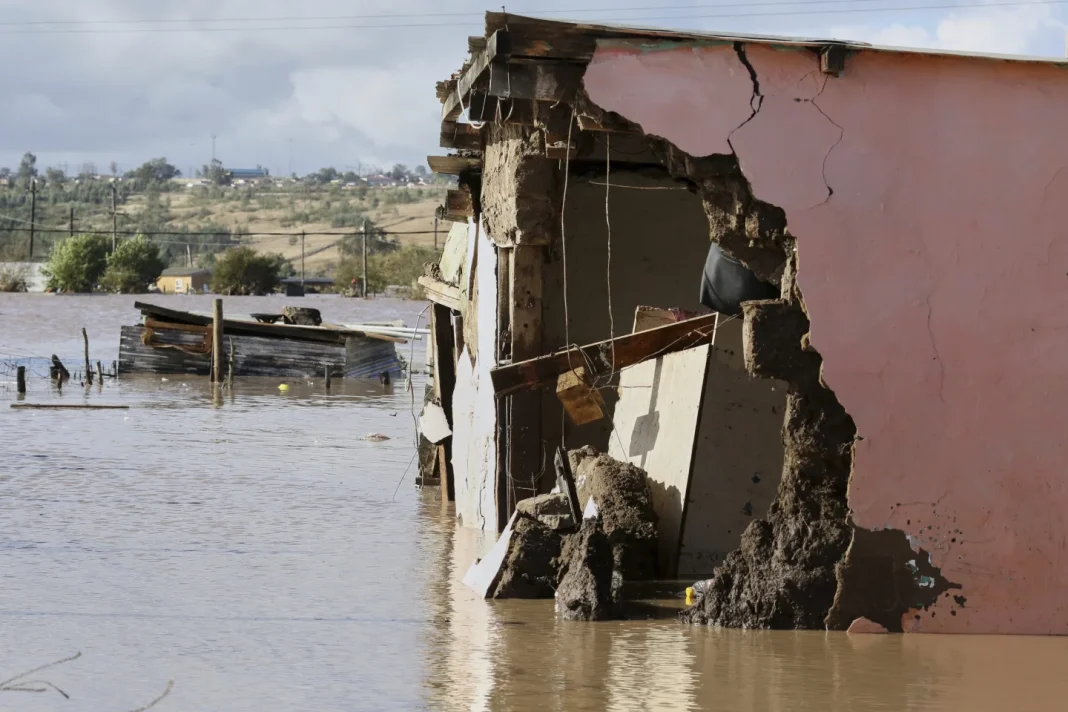By Johnathan Paoli
The Eastern Cape government has confirmed a devastating death toll of 101 people following the catastrophic flooding that struck the province earlier in the month.
Cooperative governance and traditional affairs MEC Zolile Williams has extended heartfelt condolences to the families of the deceased and acknowledged the profound emotional toll the crisis has taken on both communities and government officials.
“Each announcement of a new fatality has been a painful burden on our hearts. This is a tragedy that has wounded the very soul of our province,” he told reporters on Thursday.
According to the latest figures, 38 children of who 32 were learners, have died.
The OR Tambo District accounts for the majority of the fatalities with 77 deaths, followed by Amathole (10), Alfred Nzo and Chris Hani (5 each), and two each in Joe Gqabi and Sarah Baartman.
A total of 94 bodies have been identified and handed over to families, while seven remain unidentified, with decomposing conditions requiring DNA testing.
At least 4724 people have been rendered homeless, and 6869 households affected, with 2145 homes partially damaged.
The youngest victim was a 12-month-old infant recovered in Mthatha.
Williams revealed that two children remained missing and are presumed to have been swept away in the floods.
The provincial government is working tirelessly with affected families, offering psychosocial, spiritual and logistical support, and ensuring dignified burials with the assistance of funeral service provider AVBOB, which has offered free services, including body storage and transportation.
Currently in the Immediate Response and Humanitarian Relief Phase, the provincial government is working with NGOs, civil society and the private sector to meet the basic needs of those affected.
Partnerships with Gift of the Givers, Al Imdaad Foundation, the Black Coffee Foundation, Asfraful Aid, Old Mutual and MTN have helped deliver food parcels, blankets, clothing and hygiene items to displaced families.
Williams appealed for continued public support, requesting donations of household goods, baby food, toiletries, sanitary items, clothing and basic furniture to support recovery efforts and prepare communities for resettlement.
In line with national disaster response protocols, the relief operation is being coordinated under the District Development Model and supported by the National Disaster Management Centre and Interministerial Committee on Disaster Management.
Efforts to restore electricity and water have seen notable progress, with over 95% of water supply and 80% of electricity restored in Amathole and OR Tambo Districts.
However, rebuilding infrastructure remains a mammoth task.
The total cost of infrastructure damage is estimated at R5.1 billion, with R3.2 billion needed across provincial departments, R1.8 billion for municipal infrastructure, and R461 million required for Temporary Residential Units. But only R120 million is available.
Government is sourcing additional support from national departments and donors to bridge the funding gap.
Emergency shelters, including community halls and bed-and-breakfast facilities, have been activated in OR Tambo and Mnquma to house displaced families.
Land has been identified for temporary and permanent housing in Mnquma and King Sabata Dalindyebo Municipalities, though social facilitation will be needed as some families may need to relocate permanently.
Floodwater caused widespread damage to roads, schools, clinics and hospitals, with 431 schools and 69 health facilities affected.
A total of R935 million is needed for road repairs, with R102 million already reprioritised from the provincial transport budget.
Twenty-nine roads in Chris Hani and 22 in OR Tambo remain impassable, while road repairs have begun using internal provincial resources.
In the health sector, over R600,000 worth of repairs have already been completed.
In education, learners who missed exams have since written catch-up papers on Monday, and the education department is distributing new learning materials, uniforms and support packs to affected schools.
The floods also wreaked havoc on agriculture, with 1339 livestock units lost, 1803 hectares of crops destroyed, and extensive damage to irrigation systems, water tanks, and fencing.
Williams confirmed that veterinary and technical support is being provided to affected farmers, alongside damage assessments to guide future recovery programmes.
The national government has officially declared a National Disaster under the Disaster Management Act of 2002, unlocking further national and international support for infrastructure rehabilitation and disaster relief across the Eastern Cape and KwaZulu-Natal.
Acknowledging public concern over potential misuse of funds, Williams reaffirmed the provincial government’s commitment to transparent and accountable financial management.
“We are committed to ensuring financial accountability, with stringent internal controls and risk mitigation systems in place,” he said.
He urged media houses to exercise restraint when reporting body counts, explaining that identification protocols require forensic confirmation before a body is officially included in the death toll.
The province remains on high alert as additional severe weather is forecast in the days ahead, with strong winds and worsening conditions expected in some parts of the Western Cape and Eastern Cape.
INSIDE METROS

